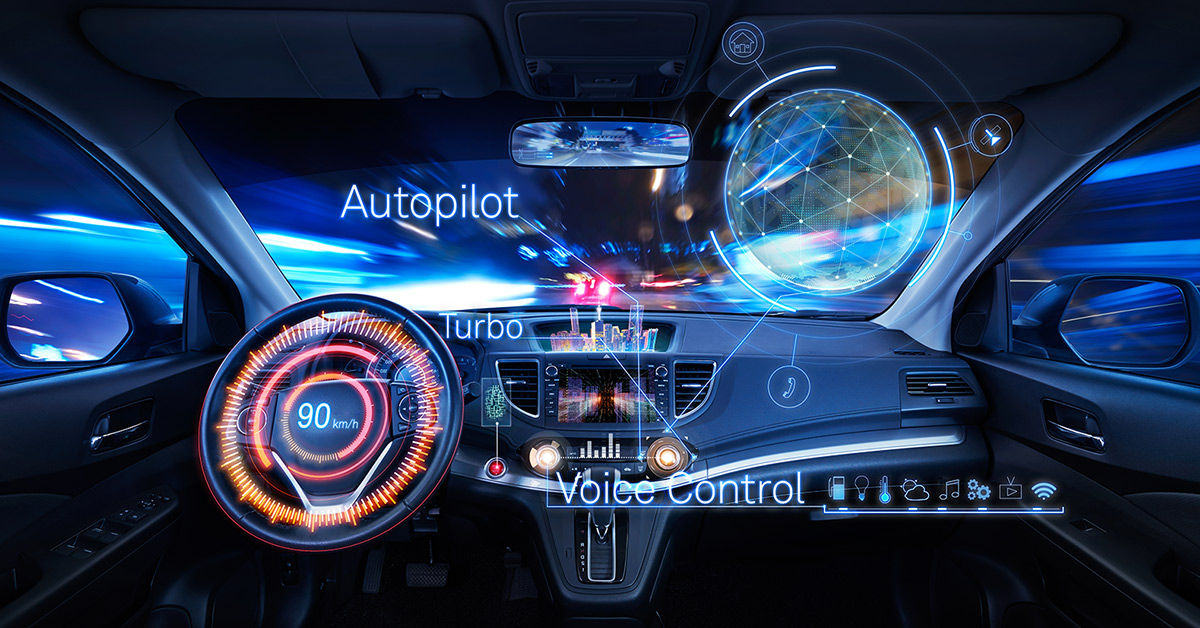We probably listen to more music and podcasts in our cars than anywhere else. Which means this is where we’re pushing the boundaries of audio experience— less noise, personalized sound zones, and control. And we’re more aware of the safety implications, not distracting or tiring the driver.

The automotive industry is rapidly closing the gap in adopting the new technologies we already know in consumer devices. We want to have the latest features that are being advertised by the car manufacturers, but we also expect safety and reliability over much longer timeframes than we expect from our phones. OEMs and Tier 1s are aggressively rethinking our experience in the car, with more focus on personalized audio experiences around the cabin, higher-quality audio performance, more flexible access to streaming options and, always important, increased safety to offset driver distraction and fatigue.
Enhanced Audio Experience
One area we keep seeing Automotive OEMs investing in is improving in-car audio experiences, especially in acoustic isolation and noise control technologies. For cars with internal combustion engines, active noise control (ANC) is important to cancel whatever engine noise gets through to the cabin. As an example, the Genesis GV80 now offers road active noise control (RANC), using data from acceleration sensors around the car to predict noise and generate in real-time reverse-phase audio signals for noise cancellation in the cabin, improving In-Car-Communication (ICC) capabilities. Some OEMs design in-house solutions and some use aftermarket solutions by companies like Silentium.
Increasingly, we demand fully immersive sound, with speakers mounted around the car interior, providing a high-quality 3D surround sound experience in premium cars certainly but increasingly in value-priced cars as well, providing premium quality audio even when supported by entry-level hardware. Fraunhofer Symphoria provides one such solution.
Separated audio zones in the car are already possible. Dirac provides systems for high-end automobiles allowing active separation between front and rear seats and a constant sweet spot in each, regardless of your position. This concept is now extending to personal zones. Silentium offers its Personal Sound Bubble to create independent sound zones for the driver and a rear passenger. Hyundai-Kia offers a proprietary Separated Sound Zone technology to provide a personal experience per passenger. Harman Individual Sound Zones provides a similar experience. All of these solutions work without the need for headphones through clever audio cancellation between locations.
Safety and Situational Awareness
These audio technologies will greatly improve our in-car experiences and communication, but how will they affect the driver when intermingled with alerts and notifications? It isn’t difficult to overload the best of us with too many inputs. Even if we’re not overloaded, a stream of inputs requiring attention — including entertainment — can become tiring. An overloaded or tired driver is not a safe driver.
This concern becomes even more acute as we automate more of the driving task. It’s no surprise that the more we automate for a driver, the less rapidly they can respond to potential dangers. Some refer to a sterile cockpit rule to minimize distractions. This is already common in aircrafts. To a first order that will require turning down other distractions when, say, a need to brake or swerve may be detected. To a second order, it might require more anticipation. As an obvious example, if sensors detect fast-moving and heavy traffic, everything else should be turned down or off.
Monetization
There are already signs that the business models for cars may be evolving (e.g., a car-as-a-service model, which is making a debut now). Meantime, we see revenue opportunities for the audio premium services increasingly likely to explore subscription models. If Sirius-XM and Spotify can do it, why not others? In-car streaming audio, in particular, is a market ready for rapid growth, moving us away from the limitations of built-in captive hardware.
upporting Technology
Many of the technologies and experiences mentioned here depend heavily on fast, efficient, and affordable signal processing solutions, for contextual awareness in the cockpit, for noise and echo cancellation, beamforming and audio zoom, personal sound bubbles, voice activity detection, voice biometrics, and accurate voice command recognition.
A number of these will be needed not just in the cockpit but also in other areas of the cabin — there’s little value in separated sound zones if only the driver can control what’s playing in your zone. Which means that signal processing and sensor fusion is likely to play an increasing role in our future cars. aX
This article was published in audioXpress, June 2020.
About the Author
Elia Shenberger is a Business Development Director in the CEVA Sound BU, and has more than 15 years of experience in the Professional and Consumer Audio industries. Before joining CEVA, he was the Director of Strategic Alliances at Waves Audio, building and managing strategic partnerships and relationships with Fortune 500 semiconductor companies, as well as with OEM mobile and PC customers. Shenberger is also a professional audio engineer, who graduated from SAE Sydney.
Resources
CEVA, Inc., www.ceva-ip.com
“CEVA Announces SensPro High Performance Sensor Hub DSP Architecture for Smart Devices,” audioXpress,
Published on AudioXpress.


